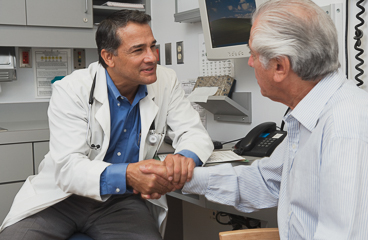
What is radiosurgery?
Radiosurgery is a type of radiation therapy. It is often used for cancers of the head and spine. It can also be used for some cancers in other parts of the body and for some non-cancer problems. The treatment focuses many beams of radiation from different angles onto the tumour. The combined beams put a higher, more concentrated dose on the tumour without harming the healthy tissue around it.
There are two types of radiosurgery. Stereotactic radiosurgery (SRS) can treat certain brain and spine tumours with one treatment. Stereotactic body radiation therapy (SBRT) is done in a few treatments over time. It is used to treat cancers in many places in the body.
With SRS, the skin is not cut, and nothing is taken out of the body. Radiosurgery has "surgery" in its name because the treatment is precise, as if the tumour were being removed with surgery.
This procedure can treat certain non-cancer medical conditions. These include blood vessel problems and nerve problems. Some treatment centres are able to use SRS to treat tumours in other parts of the body.
How is it done?
Before treatment, you will have an MRI or CT scan of your head. The scan helps create a 3D map of the tumour and the area around it. A computer uses the map to help guide the doctor in setting up the angles and strength of the radiation beams for treating the tumour.
You may need a procedure to place special markers near your cancer before treatment. These markers are called fiducial markers. They may be used to make treatment more accurate. This is because they are easier to target than the cancer itself.
The radiation beams need to be aimed accurately. You will need to hold still. For some types of radiosurgery, special devices will be used to help. One type is a frame that holds pins tight against your head. Or you may have a mask that fits closely on your head. Or you may lie on a special bed that moulds to your body. Some radiosurgery systems use special cameras and robotic equipment to track small movements, like breathing, so that you don't need any special equipment to keep you from moving.
You may have a single treatment or a few treatments. Each treatment session can last up to a few hours. Parts of the machine may move and make noise while they deliver the radiation. The sound may worry you, but the machine is under the doctor's control. If you are nervous, talk to the doctor, nurse, or radiation technologist who is present during the treatment. The radiation is painless.
What can you expect after radiosurgery?
- You will likely go home about an hour after the treatment. Be sure to have someone drive you home.
- Your doctor may give you specific instructions on when you can do your normal activities again, such as driving and going back to work.
- Side effects vary from person to person and are most often mild. You may feel tired after treatment. Some people have a headache or an upset stomach.
Follow-up care is a key part of your treatment and safety. Be sure to make and go to all appointments, and call your doctor or nurse advice line (811 in most provinces and territories) if you are having problems. It's also a good idea to know your test results and keep a list of the medicines you take.
Where can you learn more?
Go to https://www.healthwise.net/patientEd
Enter C657 in the search box to learn more about "Learning About Radiosurgery".
